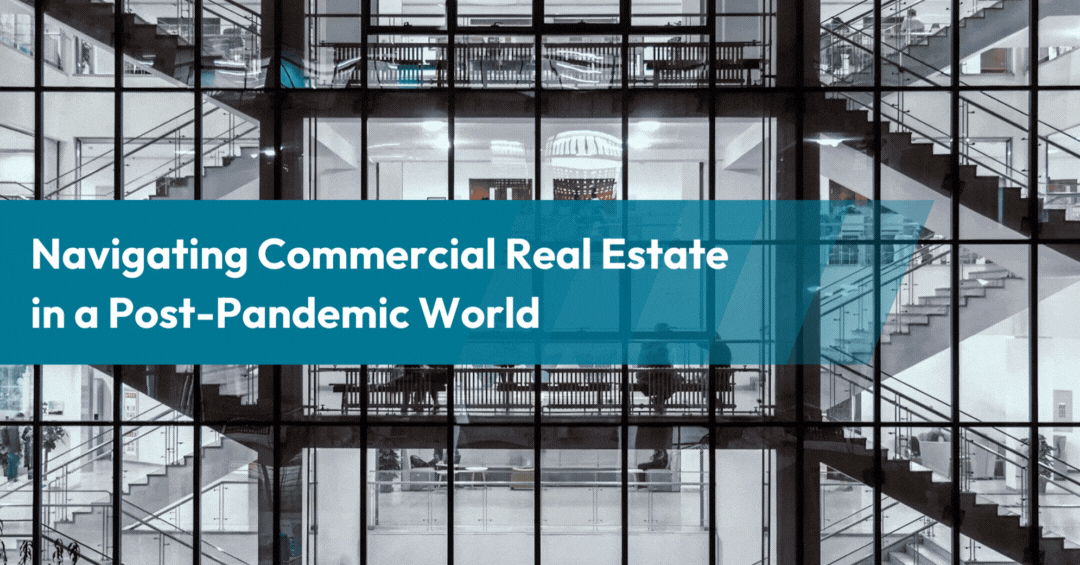Article

The last two and a half years have reshaped our world in unprecedented ways, with the pandemic and lockdowns altering the very fabric of our daily lives. One significant and lasting change has been the transformation of the office environment. Today, we’ll delve into the evolving landscape of commercial real estate, exploring how remote work, interest rates, and sector-specific trends are shaping opportunities in this space.
The New Office Norm
For many professionals, the traditional 9-to-5 office routine has become a relic of the past. Flexibility is now the name of the game. Pre-pandemic, remote work was a rarity, with most employees commuting to the office daily. During the pandemic, remote work became the norm. Today, companies are embracing hybrid models, with employees spending a portion of their week in the office and the rest working remotely. The office landscape is no longer a static structure; it’s dynamic, responding to changing demands and circumstances.
Flexible work arrangements are here to stay, allowing employees to adapt to circumstances such as heatwaves or potential illnesses. This newfound adaptability has changed the dynamics of the office, making it essential for companies to rethink their office space requirements.
The Challenge of Commercial Real Estate Valuation
In the world of commercial property investments, a significant challenge has emerged: rising interest rates. Property valuation is closely tied to the required yield for investors. In simple terms, if you can get a 5% return from a bank account, you wouldn’t settle for less when investing in property. Due to the higher risk associated with property investments, investors typically demand even greater returns.
When interest rates in the broader economy increase, investors adjust their expectations for property yields. This means that the value of properties can decrease, as investors may be less willing to pay a premium for a given level of rent. In times of rising interest rates, the commercial property market can experience downward pressure on rents and property values.
Furthermore, the looming threat of recession, driven by rising interest rates and the soaring cost of living, adds another layer of uncertainty to the commercial property market. Even a mild recession can lead to reduced investment in property and further strain on rental income.
Sector-Specific Resilience
While these challenges pose risks to the commercial property market as a whole, it’s important to note that some sectors and regions are more resilient than others. Certain industries continue to thrive, which can create pockets of opportunity for savvy investors.
For instance, technology-driven sectors, logistics, and healthcare-related properties are displaying resilience in the face of economic turbulence. These sectors, marked by high demand and innovation, may offer attractive investment prospects despite the broader challenges.
The Risk to Banks
Historically, commercial property downturns have had a domino effect, impacting the stability of banks. When loans tied to commercial properties start to default, banks face heightened risks. In previous crises, banking crises have erupted from a downturn in the commercial property sector, causing banks to curtail lending and affecting the broader economy.
However, there is a silver lining. According to Matthew Pointon of Capital Economics, lending exposure to commercial property remains modest compared to past standards. This reduced exposure lowers the risk of a commercial property downturn triggering a banking crisis.
Investing in Commercial Real Estate: A Cautionary Tale
For individual investors interested in commercial property, the key takeaway is not to avoid it altogether but to invest wisely. Here are some considerations:
- Explore Real Estate Investment Trusts (REITs): Instead of opting for open-ended property funds, consider investing through REITs. REITs offer liquidity advantages, allowing you to exit your investment more easily if the market takes a downturn.
- Diversify Your Portfolio: Avoid putting all your eggs in one basket. Diversification across sectors and regions can help mitigate risks associated with commercial property investments. Read through some of our past blogs to discover opportunities that best suit your diversification needs.
- Stay Informed: Keep a close eye on market trends, interest rate movements, and sector-specific developments. Being informed will empower you to make better investment decisions. Stay informed by subscribing to the De Pointe Opportunities blog and keep abreast of the latest in alternative investment markets.
The post-pandemic era has reshaped the commercial property landscape. Flexibility, rising interest rates, and sector-specific trends are influencing the opportunities and risks in this market. While challenges exist, investors who approach commercial property investments with careful consideration, diversification, and an awareness of market dynamics can still find opportunities for growth and stability in this evolving landscape.





